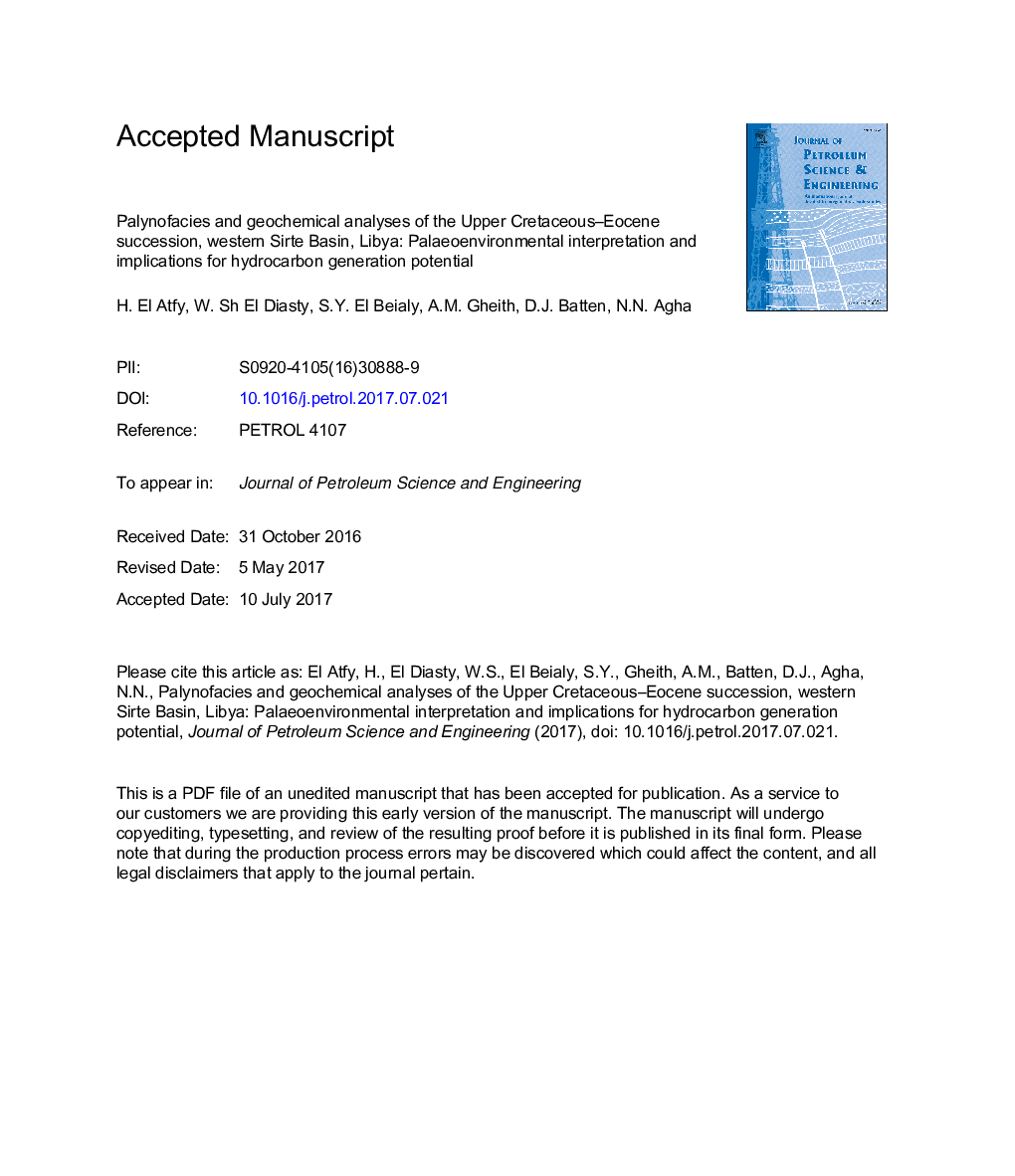| کد مقاله | کد نشریه | سال انتشار | مقاله انگلیسی | نسخه تمام متن |
|---|---|---|---|---|
| 5483940 | 1522784 | 2017 | 46 صفحه PDF | دانلود رایگان |
عنوان انگلیسی مقاله ISI
Palynofacies and geochemical analyses of the Upper Cretaceous-Eocene succession, western Sirte Basin, Libya: Palaeoenvironmental interpretation and implications for hydrocarbon generation potential
دانلود مقاله + سفارش ترجمه
دانلود مقاله ISI انگلیسی
رایگان برای ایرانیان
کلمات کلیدی
موضوعات مرتبط
مهندسی و علوم پایه
علوم زمین و سیارات
زمین شناسی اقتصادی
پیش نمایش صفحه اول مقاله

چکیده انگلیسی
One hundred and thirty-six core and cuttings samples from Upper Cretaceous-Eocene deposits that are believed to include the most important source rocks in the Sirte Basin have been subjected to Rock-Eval pyrolysis, total organic carbon measurements, and palynofacies and microfacies analyses to determine palaeoenvironments and the thermal maturation history of the succession. It is apparent that the lower part of the Bahi Formation, the oldest rock unit examined, reflects a basin margin environment under the influence of freshwater input. Shallow marine, near-shore, inner shelf, suboxic-anoxic conditions, which are first suggested by the uppermost deposits of the Bahi Formation, prevailed for much of the time during deposition of the younger Cretaceous Etel, Rachmat, Sirte and Kalash formations. Shallow supratidal and intertidal sub-environments alternating with deeper environments of shelf embayments associated with a maximum rise in sea level are indicated by the Paleocene Farrud Member of the Beda Formation. The Zelten Formation consists of shallow intertidal and lagoonal facies, and the overlying Paleocene-Eocene Kheir Formation reflects relatively shallow marine sedimentation in mid to outer shelf environments alternating with short-lived, shallow, intertidal-lagoonal to supratidal conditions. The TOC content of the Upper Cretaceous samples examined is mostly moderate (up to 2.04%), the organic matter consisting of Types II and II/III kerogen. Differences in hydrocarbon generation potential are linked to varying proportions of aquatic versus terrigenous organic matter in the samples examined and hence to depositional conditions. Combined geochemical and palynofacies data reflect deposition mainly in weakly reducing to suboxic settings and suggest that immature to early mature gas-prone source rocks are within the Etel, Rachmat and some of the Sirte Formation, and mature oil/gas-prone source rocks are within the Sirte and Kalash formations.
ناشر
Database: Elsevier - ScienceDirect (ساینس دایرکت)
Journal: Journal of Petroleum Science and Engineering - Volume 157, August 2017, Pages 148-163
Journal: Journal of Petroleum Science and Engineering - Volume 157, August 2017, Pages 148-163
نویسندگان
H. El Atfy, W.Sh. El Diasty, S.Y. El Beialy, A.M. Gheith, D.J. Batten, N.N. Agha,